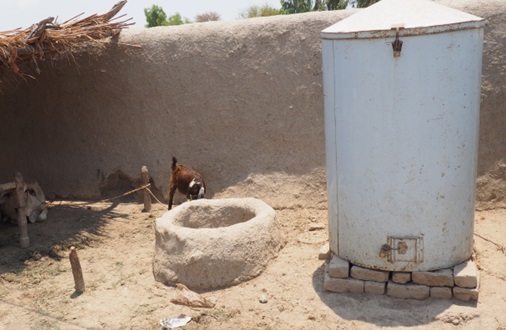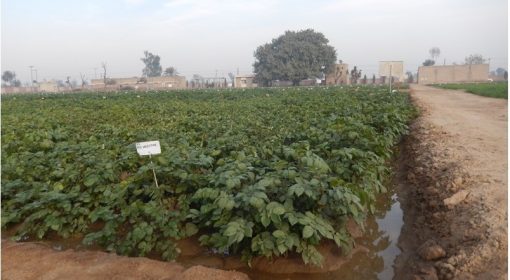By Ashfaque Soomro and Frank van Steenbergen

Securing food and preserving seed is a big challenge, the more so in stressed environments and vulnerable communities, such as the areas watered by short term floods, the so-called spate-irrigated areas, as common in large part of Pakistan. These areas are often remote with challenging access to external food supplies, instead using their own crop varieties with indigenous seeds. The challenge is to have enough grain for the next year, when there may not be a good harvest, and to preserve the best seeds for a new season.
Communities store grain, seeds and other material through various techniques. Two of them is the use of storage bins either in mud containers or galvanized iron sheet drums. Mud drum-shaped bins have been longstanding practice since centuries in rural areas of Pakistan, for the domestic consumption and sowing purposes. This bin is made from mud and twigs in different sizes. People made them from these locally available materials and dry them under the sun for few days. The practice of using mud grain storage bins is continued in many parts of spate irrigated areas in Sindh, Pakistan. People continue to prefer it, because keeping seed in iron bins affects the germination rate also, as seed gets very heated all the day and loses fertility rate. The earthen material provides natural insulation, helping to regulate temperature and humidity levels inside the bins, which is crucial for preserving seed grain quality.

Yet over the period, a large of the farmers have shifted to using iron drum shaped bins made of the galvanized sheets, as these are less exposed to wear and tear, and easier to handle.
Even so, spate farmers opine that the mud made bin is safer practice than the iron bins. In iron bins, there is always the risk of rust and the life of iron sheet is also not for ever. It is costly also and transportation to villages also costs. As compared to iron GI sheet bins, the bins made of mud and husks, is low cost and environment friendly, as they do not get warmed in summer season. “The only thing, we need to do is the mud plastering over it, to protect it against rains, each year”, says a farmer from Dadu district, Sindh Pakistan. Usually, women plaster these grain storage bins with mud, each year.
The risk of damages by rain can be reduced significantly by making them at some elevated over a base of bricks, which could protect them and increase its life. The usage of thatched material in between the walls of bins can also be a good technique to make it resilient against the rain. A preferred option is to have the mud structures placed inside the houses, rather than outside – again elevated from the ground and detached from the walls. Another improvement is to include an closeable opening in the mud structure to take out the gains easily, as documented here. The top opening also needs to be properly closed – using some weight and a plastic sheet.

With storage losses around 5-10%, improved grain storage makes a substantial contribution to food security and economic well-being. It is an example of many small measures combining to make a huge impact. There is need to conserve such environment friendly practices in the communities and promote climate-resilient agricultural practices and technologies that enhance the durability and protection of traditional storage methods. There is much to gain with improved storage, such as the improved mud stores or the use of hermetic bags (see another blog).
Reporting from the RVO supported Newarbi Project in Sindh and Balochistan, implemented by MetaMeta Research, RDF and SPO.



